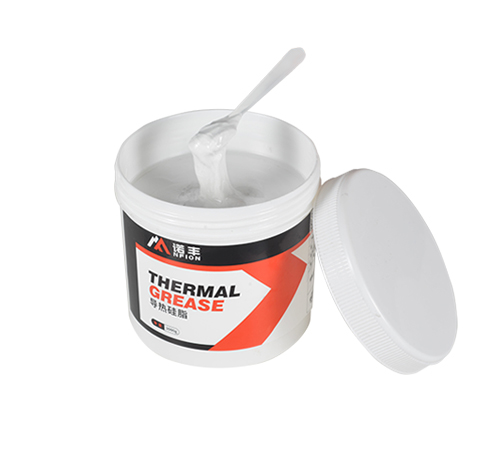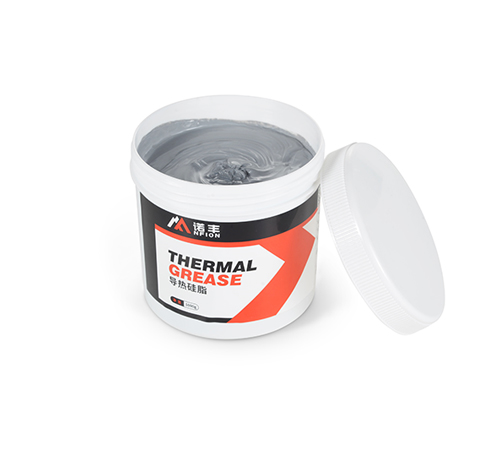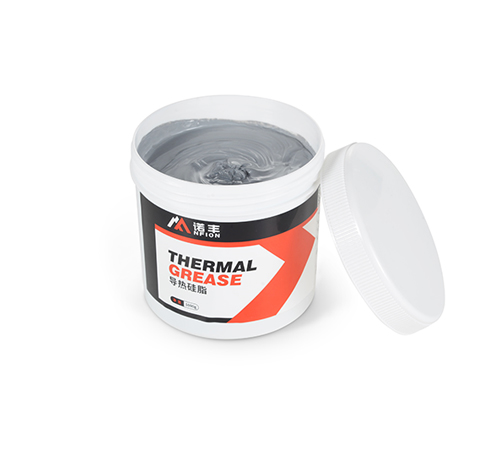
Thermal grease, also known as thermal paste, is a material used to enhance the heat dissipation performance of electronic devices. It is widely used in computer processors, graphics cards, LED lights, and other devices that require efficient heat dissipation. As technology advances, the use of thermal grease in electronic devices has become increasingly common. Consequently, whether thermal grease is toxic has become a topic of concern for many. This article will explore the components of thermal grease, its potential health risks, the safety of its practical applications, and related protective measures, providing readers with comprehensive and professional information.
Analysis of the Components of Thermal Grease
Thermal grease primarily consists of silicone oil and fillers. The fillers typically include metal oxides (such as aluminum oxide, zinc oxide), carbon-based materials (such as graphite, carbon nanotubes), and other thermally conductive materials. These components work together to provide excellent thermal conductivity and insulation properties.
1. Silicone Oil
Silicone oil is an organic silicon compound characterized by relative stability, high-temperature resistance, oxidation resistance, and chemical inertness. These properties make silicone oil widely used in the electronics industry. From a toxicity perspective, silicone oil is generally considered to be of low toxicity and, under normal conditions, does not pose significant harm to humans.
2. Fillers
Fillers come in various types, each with different chemical properties and biocompatibility. For example, aluminum oxide and zinc oxide are widely used in industries and have low toxicity, making them unlikely to pose significant harm to humans. However, certain high-performance thermal fillers, such as carbon nanotubes, may have some biological toxicity under specific conditions.
3. Other Additives
Thermal grease may also contain additives such as antioxidants and preservatives. These components are usually used in small amounts and have undergone safety testing, thus typically not posing significant harm to humans.
Potential Health Risks
Although the main components of thermal grease are generally considered low-toxicity or non-toxic, thermal grease may pose potential health risks in certain circumstances. The following are several possible sources of risk:
1. Skin Contact
During use, thermal grease may come into contact with the skin. For most people, short-term exposure to small amounts of thermal grease will not cause serious consequences. However, some sensitive individuals may experience allergic reactions to its components, such as skin redness and itching. Therefore, it is recommended to wear gloves during operation to avoid direct skin contact.
2. Inhalation Risk
In certain situations, such as when thermal grease is accidentally heated or burned, harmful gases may be released. Inhaling these gases may irritate the respiratory system and, in severe cases, cause poisoning. Therefore, during use, it is essential to avoid high-temperature environments and maintain good ventilation.
3. Risk of Ingestion
Thermal grease should not be ingested. Accidental ingestion may adversely affect the digestive system. Although, in most cases, small amounts of accidental ingestion will not lead to severe poisoning, it is still crucial to take precautions, especially in households with children. Thermal grease should be stored properly to prevent accidental ingestion.
Safety in Practical Applications
The safety of thermal grease in practical applications primarily depends on the user's operation standards and environmental conditions. The following are some safety measures to consider when using thermal grease:
1. Proper Operation
When using thermal grease, operators should strictly follow the product instructions. This typically includes the following steps:
- Wear gloves to avoid direct skin contact.
- Use specialized tools to apply thermal grease, avoiding excessive use.
- Wash hands after application to prevent residue from contacting food or eyes.
2. Storage Conditions
Thermal grease should be stored in a dry, cool place, avoiding high temperatures and direct sunlight. In households, it should be kept out of the reach of children.
3. Emergency Handling
If thermal grease accidentally contacts the skin or eyes, rinse immediately with water. If severe discomfort occurs, seek medical attention promptly. In case of accidental ingestion, rinse the mouth and seek medical attention as soon as possible; do not induce vomiting.
Environmental Impact
The use of thermal grease not only concerns human health but also involves environmental impact. Some components of thermal grease may be harmful to the environment, so special attention is needed when disposing of waste thermal grease.
1. Waste Disposal
Waste thermal grease should not be discarded casually but handled according to local environmental regulations. Generally, it should be treated as hazardous waste to avoid environmental contamination.
2. Eco-Friendly Alternatives
With the rising awareness of environmental protection, some more eco-friendly thermal grease products have emerged on the market. These products maintain good thermal conductivity while having less impact on the environment and human health. Choosing eco-friendly products benefits personal health and contributes to environmental protection.
Conclusion
As a widely used thermal material in electronic devices, the main components of thermal grease are generally considered low-toxicity or non-toxic. Under normal use conditions, the health risks posed by thermal grease are relatively low. However, improper use or extreme conditions may pose certain risks to health and the environment. Therefore, it is crucial to strictly follow operation standards, take protective measures, and properly dispose of waste when using thermal grease.
In summary, while thermal grease itself has low toxicity, cautious use is essential to ensure personal and environmental safety. By adhering to proper operation and choosing more eco-friendly and safe thermal grease products, we can enjoy the benefits of technological advancements while minimizing health and environmental risks. I hope this article helps you understand the safety of thermal grease and guides you in using it more effectively.

 CN >
CN >



